#material control
Explore tagged Tumblr posts
Note
glassjaw or eyehategod blinkies :?






Glassjaw fans rise
#mine#old web#geocities#y2k#tw flickering#flashing gif#blinkies#random blinkies#90s web#flash warning#flashing tw#glassjaw#eyehategod#everything you ever wanted to know about silence#eyewtkas#worship and tribute#material control#dopesick#preaching the end time message#music blinkies#internet nostalgia#nostalgia
60 notes
·
View notes
Text
Glassjaw - Pompeii
10 notes
·
View notes
Text
Conspiratorialism as a material phenomenon
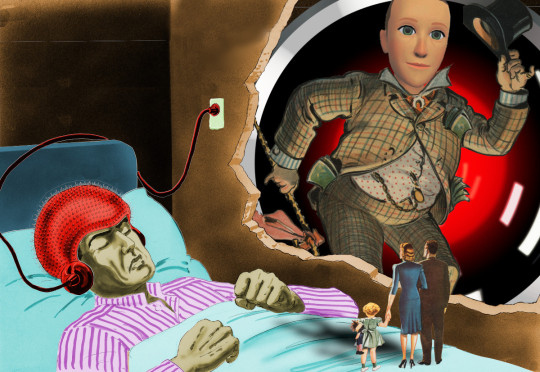
I'll be in TUCSON, AZ from November 8-10: I'm the GUEST OF HONOR at the TUSCON SCIENCE FICTION CONVENTION.

I think it behooves us to be a little skeptical of stories about AI driving people to believe wrong things and commit ugly actions. Not that I like the AI slop that is filling up our social media, but when we look at the ways that AI is harming us, slop is pretty low on the list.
The real AI harms come from the actual things that AI companies sell AI to do. There's the AI gun-detector gadgets that the credulous Mayor Eric Adams put in NYC subways, which led to 2,749 invasive searches and turned up zero guns:
https://www.cbsnews.com/newyork/news/nycs-subway-weapons-detector-pilot-program-ends/
Any time AI is used to predict crime – predictive policing, bail determinations, Child Protective Services red flags – they magnify the biases already present in these systems, and, even worse, they give this bias the veneer of scientific neutrality. This process is called "empiricism-washing," and you know you're experiencing it when you hear some variation on "it's just math, math can't be racist":
https://pluralistic.net/2020/06/23/cryptocidal-maniacs/#phrenology
When AI is used to replace customer service representatives, it systematically defrauds customers, while providing an "accountability sink" that allows the company to disclaim responsibility for the thefts:
https://pluralistic.net/2024/04/23/maximal-plausibility/#reverse-centaurs
When AI is used to perform high-velocity "decision support" that is supposed to inform a "human in the loop," it quickly overwhelms its human overseer, who takes on the role of "moral crumple zone," pressing the "OK" button as fast as they can. This is bad enough when the sacrificial victim is a human overseeing, say, proctoring software that accuses remote students of cheating on their tests:
https://pluralistic.net/2022/02/16/unauthorized-paper/#cheating-anticheat
But it's potentially lethal when the AI is a transcription engine that doctors have to use to feed notes to a data-hungry electronic health record system that is optimized to commit health insurance fraud by seeking out pretenses to "upcode" a patient's treatment. Those AIs are prone to inventing things the doctor never said, inserting them into the record that the doctor is supposed to review, but remember, the only reason the AI is there at all is that the doctor is being asked to do so much paperwork that they don't have time to treat their patients:
https://apnews.com/article/ai-artificial-intelligence-health-business-90020cdf5fa16c79ca2e5b6c4c9bbb14
My point is that "worrying about AI" is a zero-sum game. When we train our fire on the stuff that isn't important to the AI stock swindlers' business-plans (like creating AI slop), we should remember that the AI companies could halt all of that activity and not lose a dime in revenue. By contrast, when we focus on AI applications that do the most direct harm – policing, health, security, customer service – we also focus on the AI applications that make the most money and drive the most investment.
AI hasn't attracted hundreds of billions in investment capital because investors love AI slop. All the money pouring into the system – from investors, from customers, from easily gulled big-city mayors – is chasing things that AI is objectively very bad at and those things also cause much more harm than AI slop. If you want to be a good AI critic, you should devote the majority of your focus to these applications. Sure, they're not as visually arresting, but discrediting them is financially arresting, and that's what really matters.
All that said: AI slop is real, there is a lot of it, and just because it doesn't warrant priority over the stuff AI companies actually sell, it still has cultural significance and is worth considering.
AI slop has turned Facebook into an anaerobic lagoon of botshit, just the laziest, grossest engagement bait, much of it the product of rise-and-grind spammers who avidly consume get rich quick "courses" and then churn out a torrent of "shrimp Jesus" and fake chainsaw sculptures:
https://www.404media.co/email/1cdf7620-2e2f-4450-9cd9-e041f4f0c27f/
For poor engagement farmers in the global south chasing the fractional pennies that Facebook shells out for successful clickbait, the actual content of the slop is beside the point. These spammers aren't necessarily tuned into the psyche of the wealthy-world Facebook users who represent Meta's top monetization subjects. They're just trying everything and doubling down on anything that moves the needle, A/B splitting their way into weird, hyper-optimized, grotesque crap:
https://www.404media.co/facebook-is-being-overrun-with-stolen-ai-generated-images-that-people-think-are-real/
In other words, Facebook's AI spammers are laying out a banquet of arbitrary possibilities, like the letters on a Ouija board, and the Facebook users' clicks and engagement are a collective ideomotor response, moving the algorithm's planchette to the options that tug hardest at our collective delights (or, more often, disgusts).
So, rather than thinking of AI spammers as creating the ideological and aesthetic trends that drive millions of confused Facebook users into condemning, praising, and arguing about surreal botshit, it's more true to say that spammers are discovering these trends within their subjects' collective yearnings and terrors, and then refining them by exploring endlessly ramified variations in search of unsuspected niches.
(If you know anything about AI, this may remind you of something: a Generative Adversarial Network, in which one bot creates variations on a theme, and another bot ranks how closely the variations approach some ideal. In this case, the spammers are the generators and the Facebook users they evince reactions from are the discriminators)
https://en.wikipedia.org/wiki/Generative_adversarial_network
I got to thinking about this today while reading User Mag, Taylor Lorenz's superb newsletter, and her reporting on a new AI slop trend, "My neighbor’s ridiculous reason for egging my car":
https://www.usermag.co/p/my-neighbors-ridiculous-reason-for
The "egging my car" slop consists of endless variations on a story in which the poster (generally a figure of sympathy, canonically a single mother of newborn twins) complains that her awful neighbor threw dozens of eggs at her car to punish her for parking in a way that blocked his elaborate Hallowe'en display. The text is accompanied by an AI-generated image showing a modest family car that has been absolutely plastered with broken eggs, dozens upon dozens of them.
According to Lorenz, variations on this slop are topping very large Facebook discussion forums totalling millions of users, like "Movie Character…,USA Story, Volleyball Women, Top Trends, Love Style, and God Bless." These posts link to SEO sites laden with programmatic advertising.
The funnel goes:
i. Create outrage and hence broad reach;
ii, A small percentage of those who see the post will click through to the SEO site;
iii. A small fraction of those users will click a low-quality ad;
iv. The ad will pay homeopathic sub-pennies to the spammer.
The revenue per user on this kind of scam is next to nothing, so it only works if it can get very broad reach, which is why the spam is so designed for engagement maximization. The more discussion a post generates, the more users Facebook recommends it to.
These are very effective engagement bait. Almost all AI slop gets some free engagement in the form of arguments between users who don't know they're commenting an AI scam and people hectoring them for falling for the scam. This is like the free square in the middle of a bingo card.
Beyond that, there's multivalent outrage: some users are furious about food wastage; others about the poor, victimized "mother" (some users are furious about both). Not only do users get to voice their fury at both of these imaginary sins, they can also argue with one another about whether, say, food wastage even matters when compared to the petty-minded aggression of the "perpetrator." These discussions also offer lots of opportunity for violent fantasies about the bad guy getting a comeuppance, offers to travel to the imaginary AI-generated suburb to dole out a beating, etc. All in all, the spammers behind this tedious fiction have really figured out how to rope in all kinds of users' attention.
Of course, the spammers don't get much from this. There isn't such a thing as an "attention economy." You can't use attention as a unit of account, a medium of exchange or a store of value. Attention – like everything else that you can't build an economy upon, such as cryptocurrency – must be converted to money before it has economic significance. Hence that tooth-achingly trite high-tech neologism, "monetization."
The monetization of attention is very poor, but AI is heavily subsidized or even free (for now), so the largest venture capital and private equity funds in the world are spending billions in public pension money and rich peoples' savings into CO2 plumes, GPUs, and botshit so that a bunch of hustle-culture weirdos in the Pacific Rim can make a few dollars by tricking people into clicking through engagement bait slop – twice.
The slop isn't the point of this, but the slop does have the useful function of making the collective ideomotor response visible and thus providing a peek into our hopes and fears. What does the "egging my car" slop say about the things that we're thinking about?
Lorenz cites Jamie Cohen, a media scholar at CUNY Queens, who points out that subtext of this slop is "fear and distrust in people about their neighbors." Cohen predicts that "the next trend, is going to be stranger and more violent.”
This feels right to me. The corollary of mistrusting your neighbors, of course, is trusting only yourself and your family. Or, as Margaret Thatcher liked to say, "There is no such thing as society. There are individual men and women and there are families."
We are living in the tail end of a 40 year experiment in structuring our world as though "there is no such thing as society." We've gutted our welfare net, shut down or privatized public services, all but abolished solidaristic institutions like unions.
This isn't mere aesthetics: an atomized society is far more hospitable to extreme wealth inequality than one in which we are all in it together. When your power comes from being a "wise consumer" who "votes with your wallet," then all you can do about the climate emergency is buy a different kind of car – you can't build the public transit system that will make cars obsolete.
When you "vote with your wallet" all you can do about animal cruelty and habitat loss is eat less meat. When you "vote with your wallet" all you can do about high drug prices is "shop around for a bargain." When you vote with your wallet, all you can do when your bank forecloses on your home is "choose your next lender more carefully."
Most importantly, when you vote with your wallet, you cast a ballot in an election that the people with the thickest wallets always win. No wonder those people have spent so long teaching us that we can't trust our neighbors, that there is no such thing as society, that we can't have nice things. That there is no alternative.
The commercial surveillance industry really wants you to believe that they're good at convincing people of things, because that's a good way to sell advertising. But claims of mind-control are pretty goddamned improbable – everyone who ever claimed to have managed the trick was lying, from Rasputin to MK-ULTRA:
https://pluralistic.net/HowToDestroySurveillanceCapitalism
Rather than seeing these platforms as convincing people of things, we should understand them as discovering and reinforcing the ideology that people have been driven to by material conditions. Platforms like Facebook show us to one another, let us form groups that can imperfectly fill in for the solidarity we're desperate for after 40 years of "no such thing as society."
The most interesting thing about "egging my car" slop is that it reveals that so many of us are convinced of two contradictory things: first, that everyone else is a monster who will turn on you for the pettiest of reasons; and second, that we're all the kind of people who would stick up for the victims of those monsters.

Tor Books as just published two new, free LITTLE BROTHER stories: VIGILANT, about creepy surveillance in distance education; and SPILL, about oil pipelines and indigenous landback.


If you'd like an essay-formatted version of this post to read or share, here's a link to it on pluralistic.net, my surveillance-free, ad-free, tracker-free blog:
https://pluralistic.net/2024/10/29/hobbesian-slop/#cui-bono

Image: Cryteria (modified) https://commons.wikimedia.org/wiki/File:HAL9000.svg
CC BY 3.0 https://creativecommons.org/licenses/by/3.0/deed.en
#pluralistic#taylor lorenz#conspiratorialism#conspiracy fantasy#mind control#a paradise built in hell#solnit#ai slop#ai#disinformation#materialism#doppelganger#naomi klein
304 notes
·
View notes
Text
On the 35th anniversary of The École Polytechnique massacre never forget the 14 women who were killed for being women in science
The École Polytechnique massacre (French: tuerie de l'École polytechnique), also known as the Montreal massacre, was an antifeminist mass shooting that occurred on December 6, 1989 at the École Polytechnique de Montréal in Montreal, Quebec. Fourteen women were murdered; another ten women and four men were injured.
Perpetrator Marc Lépine, armed with a legally obtained Ruger Mini-14 semi-automatic rifle and hunting knife, entered a mechanical engineering class at the École Polytechnique. He ordered the women to one side of the classroom, and instructed the men to leave. After claiming that he was "fighting feminism", he shot all nine women in the room, killing six. The shooter then moved through corridors, the cafeteria, and another classroom, specifically targeting women, for just under 20 minutes. He killed eight more women before ending his own life. In total, 14 women were killed, and 14 others were injured.
The massacre is now widely regarded as an anti-feminist attack and representative of wider societal violence against women; the anniversary of the massacre is commemorated as the National Day of Remembrance and Action on Violence Against Women. After the attack, Canadians debated various interpretations of the events, their significance, and the shooter's motives. Other interpretations emphasized the shooter's abuse as a child or suggested that the massacre was the isolated act of a madman, unrelated to larger social issues
The incident led to more stringent gun control laws in Canada, and increased action to end violence against women. It also resulted in changes in emergency services protocols to shootings, including immediate, active intervention by police. These changes were later credited with minimizing casualties during incidents in Montreal and elsewhere. The massacre remained the deadliest mass shooting in Canada until the 2020 Nova Scotia attacks over 30 years later.[4]
Contents
Timeline
Sometime after 4 p.m. on December 6, 1989, Marc Lépine arrived at the building housing the École Polytechnique, an engineering school affiliated with the Université de Montréal, armed with a Ruger Mini-14 rifle and a hunting knife.[5] He had purchased the gun less than a month earlier on November 21 in a Checkmate Sports store in Montreal. He had told the clerk that he was going to use it to hunt small game.[6] He had been in and around the École Polytechnique building at least seven times in the weeks leading up to December 6.[5]
The perpetrator first sat in the office of the registrar on the second floor for a while, where he was seen rummaging through a plastic bag. He did not speak to anyone, even when a staff member asked if she could help him.[2] He then left the office and was seen in other parts of the building before entering a second-floor mechanical engineering class of about sixty students at about 5:10 p.m.[7] After approaching the student giving a presentation, he asked everyone to stop everything and ordered the women and men to opposite sides of the classroom. No one moved at first, believing it to be a joke until he fired a shot into the ceiling.[8][9]
Lépine then separated the nine women from the approximately fifty men and ordered the men to leave.[10][9] He asked the women whether they knew why they were there; instead of replying, a student asked who he was. He answered that he was fighting feminism.[9][11] One of the students, Nathalie Provost, protested that they were women studying engineering, not feminists fighting against men or marching to prove that they were better. He responded by opening fire on the students from left to right, killing six—Hélène Colgan, Nathalie Croteau, Barbara Daigneault, Anne-Marie Lemay, Sonia Pelletier, and Annie St-Arneault—and wounding three others, including Provost.[9][11] Before leaving the room, he wrote the word "shit" twice on a student project.[10]
The gunman continued into the second-floor corridor and wounded three students before entering another room where he twice attempted to shoot a female student. When his weapon failed to fire, he entered the emergency staircase where he was seen reloading his gun. He returned to the room he had just left, but the students had locked the door; he failed to unlock it with three shots fired into the door. Moving along the corridor, he shot at others, wounding one, before moving towards the financial services office, where he shot and killed Maryse Laganière through the window of the door she had just locked.[12][11]
The perpetrator next went down to the first-floor cafeteria, in which about 100 people were gathered. He shot nursing student Barbara Maria Klucznick near the kitchens and wounded another student, and the crowd scattered. Entering an unlocked storage area at the end of the cafeteria, the gunman shot and killed Anne-Marie Edward and Geneviève Bergeron, who were hiding there. He told a male and female student to come out from under a table; they complied and were not shot.[13]: 30 [11]
The shooter then walked up an escalator to the third floor where he shot and wounded one female and two male students in the corridor. He entered another classroom and told the men to "get out", shooting and wounding Maryse Leclair, who was standing on the low platform at the front of the classroom, giving a presentation.[13]: 26–27 He fired on students in the front row and then killed Maud Haviernick and Michèle Richard who were trying to escape the room, while other students dived under their desks.[11][13]: 30–31 The killer moved towards some of the female students, wounding three of them and killing Annie Turcotte. He changed the magazine in his weapon and moved to the front of the class, shooting in all directions. At this point, the wounded Leclair asked for help; the gunman unsheathed his hunting knife and stabbed her three times, killing her. He took off his cap, wrapped his coat around his rifle, exclaimed, "Oh shit", and then killed himself with a shot to the head, 20 minutes after having begun his attack.[14][13]: 31–32 About 60 unfired cartridges remained in the boxes he carried with him.[14][13]: 26–27
After briefing reporters outside, Montreal Police director of public relations Pierre Leclair entered the building and found his daughter Maryse's stabbed body.[15][16]
The Quebec and Montreal governments declared three days of mourning.[15] A joint funeral for nine of the women was held at Notre-Dame Basilica on December 11, 1989, and was attended by Governor General Jeanne Sauvé, Prime Minister Brian Mulroney, Quebec premier Robert Bourassa, and Montreal mayor Jean Doré, along with thousands of other mourners.
The Victims
Geneviève Bergeron (born 1968), civil engineering student
Hélène Colgan (born 1966), mechanical engineering student
Nathalie Croteau (born 1966), mechanical engineering student
Barbara Daigneault (born 1967), mechanical engineering student
Anne-Marie Edward (born 1968), chemical engineering student
Maud Haviernick (born 1960), materials engineering student
Maryse Laganière (born 1964), budget clerk in the École Polytechnique's finance department
Maryse Leclair (born 1966), materials engineering student
Anne-Marie Lemay (born 1967), mechanical engineering student
Sonia Pelletier (born 1961), mechanical engineering student
Michèle Richard (born 1968), materials engineering student
Annie St-Arneault (born 1966), mechanical engineering student
Annie Turcotte (born 1969), materials engineering student
Barbara Klucznik-Widajewicz (born 1958), nursing student
#December 6 1989#The École Polytechnique massacre (French: tuerie de l'École polytechnique)#The Montreal massacre#Canada#Quebec#Montreal#the National Day of Remembrance and Action on Violence Against Women#Gun violence#Make violence#Gun control#Men claim to protect women#But the men just obeyed and left their classmates in the hands of a gunman#Geneviève Bergeron (born 1968) civil engineering student#Barbara Daigneault (born 1967) mechanical engineering student#Anne-Marie Edward (born 1968) chemical engineering student#Maryse Laganière (born 1964) budget clerk in the École Polytechnique's finance department#Maryse Leclair (born 1966) materials engineering student#Anne-Marie Lemay (born 1967) mechanical engineering student#Sonia Pelletier (born 1961) mechanical engineering student#Barbara Klucznik-Widajewicz (born 1958) nursing student#Annie Turcotte (born 1969) materials engineering student#Hélène Colgan (born 1966) mechanical engineering student#Michèle Richard (born 1968) materials engineering student#Annie St-Arneault (born 1966) mechanical engineering student#Nathalie Croteau (born 1966) mechanical engineering student#Maud Haviernick (born 1960) materials engineering student
112 notes
·
View notes
Text

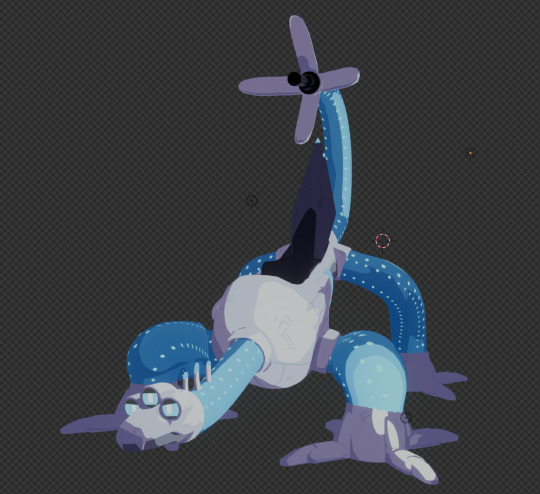
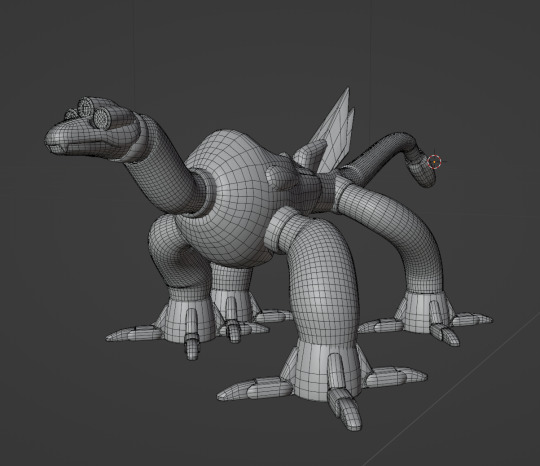
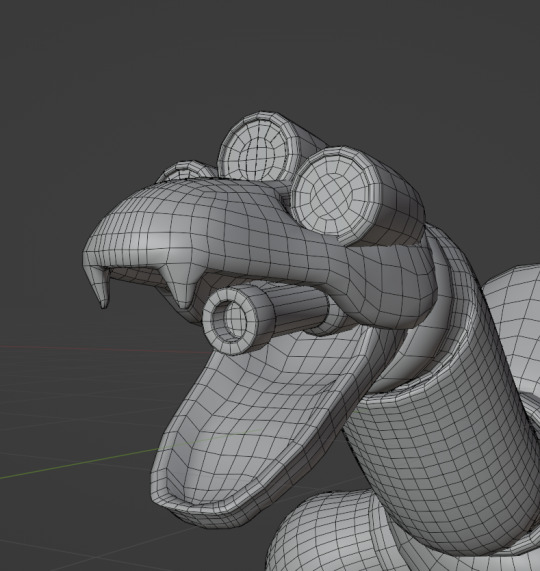
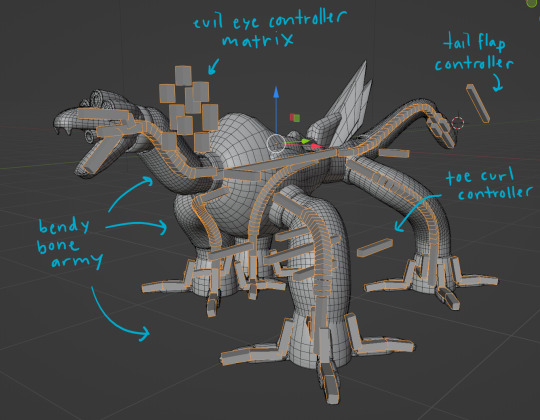


beast compilation. behold my funny dog
#quite honestly the most complex rig ive ever made so far and the first thing even resembling a facial rig#the eyes are 3 layers of mesh w materials hooked up to drivers. thank you guy who made a sonic model for tutorial#steelheart redux#mercury#my art#3d#blender#“for the love of god use custom bone shapes for your controllers” no <3 im lazy#see *i* know what everything does usually. so its fine
126 notes
·
View notes
Text
Making you video call me to tell me about your trauma so I can jerk off while you cry.
#daddy’s wh0re#dumb wh0re#attention wh0r3#corruption kink#bd/sm corruption#brainwashing#mind control#rough cnc#trauma#jerkmaterial#jerk off material#cnc free use#dumb slvt#dumb bunny#stupid slvt#stupid wh0re#older man younger woman#cnc k!nk
104 notes
·
View notes
Note
is PCRF still where you recommend people donate, or do you have another recommended group? I would like to donate but haven’t had time to do research.
(In reference to fundraising campaign I did for PCRF)
One of the most important things I have learned about conflict and healthcare and devastation, from someone who deals with them for their living, is that it is fractal, each piece of it containing unimaginable complexity, and that as a human you can’t really deal much with fractals that get more complex than, like, ferns. I am oversimplifying here. But the thing is that you cannot get bogged down endlessly in debating the nature of fractals. You decide on the level of complexity you can manage , perform an action and move on. You cannot take responsibility for every mathematical pattern that follows from your action; if you were a sort of cosmic weatherman, affecting the fates of people you’ve never met through some vague alchemy of intention, you’d know about it already. Therefore do not obsess too much over The Good Place levels of ethics and research, spiralling into fractals in search of the perfect. Therefore, also, if you want to give £2 to someone, feel free to ignore people who say “ah but if you give £2 to that guy they’ll spend it on something bad, and the whole fractal is rotten and broken.” You can only ever claim your own actions, a small piece of the fractal: to insist on your power over distant pieces of mathematical patterns is bonkers. It is religious nonsense. This is what I’ve learned and I thought it was pretty good, from someone who’d know.
So I believe the Palestine Children’s Relief Fund is not able to operate in Gaza at the moment, like many non-profits; I believe Medeciens Sans Frontiers aren’t in Gaza at the moment and that’s pretty dire indicator. However, they are mobilised in Lebanon.
The reasons why I selected PCRF to support include the fact that they have been able to deliver material aid, had pragmatic routes to evacuate children, and were reporting some success in providing/stabilising healthcare infrastructure. They have stated from the beginning that their intent was to support, and ideally restore, healthcare infrastructure, without which you cannot run a nation. I have known healthcare professionals who traveled with PCRF to work on complex cases prior to this conflict and I personally know/respect one of their prominent supporters, which helped me to make this choice. I also was hoping in the future that Gaza would have restored healthcare infrastructure and PCRF had stated their commitment to doing so.
I have received and listened to criticism about this choice, and I firmly believe that no matter what choice you make to support a cause, you’ll receive some measure of criticism (the fractal! Elodie you must consider the fractal nature of reality at all times! Scrupulous frantic morality is necessary at all times !), and that this should not stop you. To explain a bit about this, the criticisms I’ve received have mostly fallen into two camps:
- “the wrong sort of charity” - one concern is PCRF are not able to promise that their work will never support Hamas supporters or their families. This has been raised as “PCRF support Hamas”. but genuinely, given the realities of conflict, it is not practical or sane to require that people bring proof of political affiliation when seeking healthcare for their children. I’m comfortable saying that this, like other risks of fundraising/donation, is always possible but not a major consideration for me.
- “the wrong sort of fundraiser” - conversely some people stated they’d prefer I support individual families seeking evacuation through GFMs. This is also fine but my choice in the charity was partly in thinking about families who do not have GFMs, and children who do not have families. I also felt, at the time of fundraising, that supporting healthcare infrastructure was very worthy in a different way - after all, at the time the same people doing GFMs were also using/needing what healthcare was available.
My shoulders are broad, and I’m comfortable with these criticism. I am fully aware that this is not a complete solution but I personally continue to support the charity. I am explaining this to indicate that there will always be criticisms; you must accept that you can only take a small piece of the fractal, and you must accept that quite a lot of the fractal was never in your gift to control.
The situation is constantly changing and with the departure of organisations there is genuinely less hope of materially restoring the infrastructure in Gaza. At the moment donations to PCRF will likely be mobilised to Lebanon. It may be that this speaks to you. It does still speak to me.
Ultimately while it’s important to do research, it is always going to become fractal, especially in conflict situations. Nobody’s ever going to be able to point to a perfect thing that will fix everything and absolve us of criticism, you know? You will always only be able to pick up a piece of the fractal.
Now moving away from “what I personally support” there are many people more informed than myself and I would like to direct you to them as well. @gothhabiba is someone I follow who has posted several very useful posts about this and has been extremely informative, and spent a lot of time and attention on this, so I would defer to the resources and fundraisers they’ve put together. Her response to a similar question has been “pick 1-3 personal fundraisers” - this is a piece of the fractal. At the moment if what you want to do most is “materially help people in Gaza” that seems like the best option.
Also he doesn’t post much on social media, but when you get the opportunity to read a scientific article or anything by https://x.com/sullivanprof it’s worth stopping and processing. To me, Richard’s life work really shows how a piece of the fractal unpacks to reveal the whole world. I think if you have emotional space to research, it’s honestly a good investment to read some of his “manifestos” on intersections of healthcare and conflict.
#sorry if this is incoherent there are much better people to ask but I recognise that#by doing a fundraiser it is a very reasonable question#also genuinely the thing about Richard is that he is just so not bogged down by the same concerns you’ll see on social media#like#that’s a guy who just flies into warzones and starts treating people#and when you chat to a guy who does that then a lot of stuff on the internet about how much your £2#like how much tiny little intentions and £3 donations and tumblr posts and like. ao3 tags affect reality#it does put it into perspective. of course it does make a difference but the stuff that actually affects the material world is largekynmat#largely material and it usually looks like a random guy who just. goes. into warzones and treats people. and then stands up in front of#the seats of power and tells them.#and goes to conferences and teaches them.#and he does not worry about ao3 tags at all.#ultimately I’m trying to get at that the paralysis about the complexities of situations is genuine and true#but it’s also very much a state of mind that supports the seat of power#so recognise that a lot of it isn’t in our gift to control and move on with what we can and do control
128 notes
·
View notes
Text
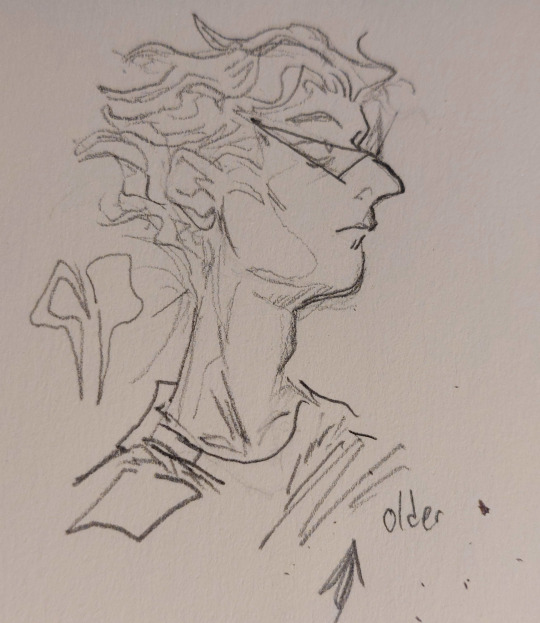
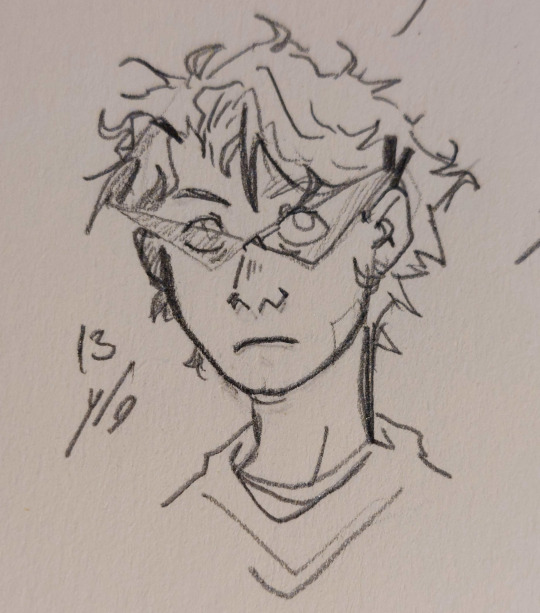

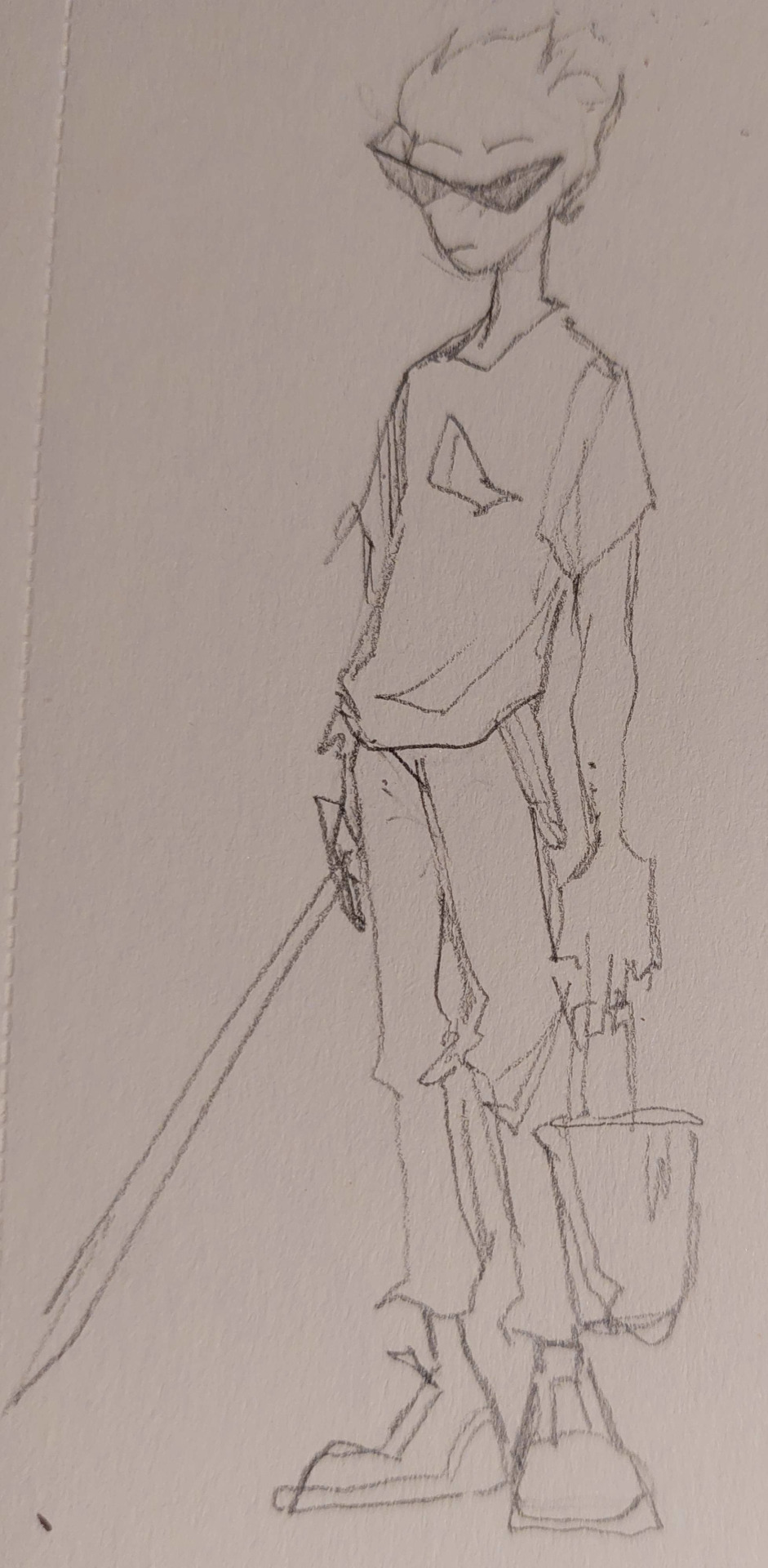
only able to draw by tricking my brain into thinking thats not what we're about to do
#homestuck#hom3stuck#home2t4ck#dirk strider#admin draws#fanart#really quick from like. yesterday. i was cold and sleepy so i laid down with a sketcbook next to me#and scribbled a few of him out before i could be stopped#love drawing dirk with frizzy hair theres just smth so charming about it on him. prince curls but in a controlled chaos format yk#anywayst. yea . mostly writing rn while the citric acid cycle and doing an autoautopsy for fic material corrodes my brrrain#motivational dirk i left up in my margins included for charm factor
182 notes
·
View notes
Text
Sometimes u rly r reading abt someone’s evil oc named Roy Harper
#he isn’t like that. uhhh#why would you write with such conviction with no understanding of the source material#this would be like me writing. fuck I don’t know a quantum mechanics paper#i just wouldn’t do that#so why would you do this. to me.#why do they make him mean and evil and controlling like what#Roy Harper
61 notes
·
View notes
Text

898 notes
·
View notes
Text
Glassjaw - My Conscience Weighs A Ton
13 notes
·
View notes
Text
By the way if you say Miku created Harry Potter I am actually lighting you on fire with my brain. She would never write that antisemitic racist trash
#the minecraft thing is also stupid but the harry potter thing is way worse imo#bc the material is so blatantly bigoted and jkr literally still controls the series and makes money from it#unlike notch who doesnt#i talk
1K notes
·
View notes
Note
who is cleric!gorgug the cleric of??
he starts out as a cleric of a (right now unnamed) nascent god of tranquility! or at least that's what the anger management support group guys told him. sadly that then turns out to be a cult recruitment ground and they're actually building the god by feeding it their emotions. I'm not super sure how that'll play out in full yet by the end of freshman year but gorgug does leave the cult when they drop an ultimatum on him.
most of sophomore year has him like. can I? try out deities? and finding out that even when people say yes what they mean by action is they try to compel him to stay and they get miffed that he doesn't stay because he doesn't feel like he fits. when the bad kids uncorrupt cassandra though he's the one who hears how they're also not sure of who they are outside of the deep grief and fear of the nightmare king, and tells them it's okay to take your time for a little bit while figuring it out, and cassandra through that becomes the god of the inbetween. gorgug offers her domain as a stop outside of a faith if you want to leave but need the structure or the support, and he makes a point to never proselytize. this of course is kind of the crux of junior year's arc for him because that doesn't do wonders number-wise lol
#not art#fh class quangle#I give kristen and gorgug the cult survivor to cult survivor communication... kristen seeing gorgug in freshman year and is#taken over by the Strongest sense of dread. being kristen tho of Course she immediately sticks by him#bc kristen leaves her family with pretty much No connection. jawbones kinda picked her up her legal status is an absolute mess#and on the spot she knows if gorgug wants to leave any time soon he needs friends outside of the cult. she still didnt expect him to#choose the bad kids over the support group when the ultimatum is dropped on him#I think I've said this somewhere before but like just due to his disposition gorgug is So recruit material it's scary#disconnect from his parents.... disconnect from peers due to elements entirely outside of his control
69 notes
·
View notes
Note
You're always so on point with your posts. On that note, it made me realize that; Considering the themes of desires in DunMeshi. It's also to say that what you think you want isn't what you actually want.
Like, Marcille thinks she wants the handsome prince from the novels she reads... But what she actually wants is someone maybe more like her father who she admired so much. Kind, virtuous, caring to a fault, a family man. Things she later finds in Chilchuck.
Because as traumatizing as it was to see her mother's spiral after her father's death; Her memories of her father itself are some of the most important to her. And it fits with her pursuit to increase her loved ones' lives, because she does want what her mother and father had.
Sipping. I do go over ‘what you think you want vs what you actually want + what you need’ in my (upcoming) Marcille & Chil arc analysis ;) It’s a part of Dunmeshi that I really like and is super fascinating, I’d honestly like to make an analysis-post on the topic: all the different threads and characters in canon that reflect that, desires vs wants and themes of idealization in Dunmeshi, but it’s one of those things that’s just so huge to make. See this is the freaking problem with doing Dunmeshi meta you start talking about the themes or a narrative and everything is so interwoven you get distracted with tangents BUT IT’S ALL COMPELLING AND RELEVANT
I know that’s something laimar does a lot too, the dad thing, with Marcille in a post-canon comic knitting beside him paralleling her parents and whatnot. I don’t know if I fully agree on the angle but there’s definitely stuff to dig at there…
Like I know that I’d like to analyze Marcille’s succubus more, it comes up in my analysis draft but it’s not the point I’m trying to make there so I focus on other stuff but… I always saw the focus of Marcille’s succubus as that she sought out an emotional connection most of all, it’s romantic and courtly in nature but more importantly there’s personality and behavior there and it’s a character she already loves and knows deeply from having read the series, so it’s not like Chil where it’s just a pretty face whose identity doesn’t matter. A friend of mine though, @room-surprise, goes with the angle that it shows she isn’t ready for a relationship and that the appeal is very self-centered, and I def think compelling points are made…
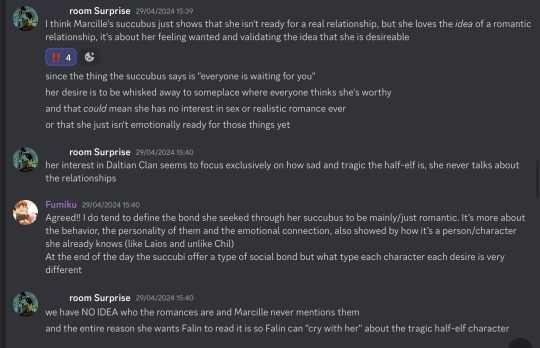


Point I was trying to make, the succubus is definitely at the crux of figuring what it is Marcille wants and craves in someone I’d say, where she’s emotionally at wether consciously or subconsciously, or how she sees herself being involved in romance at least… It’s true Marcille is enthusiastic about romance, but always someone else’s, never hers, and she seems unwilling to examine her own relationships with people. She oversteps boundaries either obliviously or carelessly and doesn’t like change…
And then there’s how complex people’s relationship to fiction can be on top of that and graaaaah
Edit in bc I forgot I wanted to mention this like an idiot: OH and I do think the Daltian Clan serves a role in the general tapestry of Dunmeshi as well, sometimes in in depth ways that Room-Surprise will tackle in their research paper way better than me I’m sure. My understanding of the importance of general Hagreus in a more general narrative sense is that he reinforces the theme of idealization/fantasy vs reality that’s super present through the manga. Beyond just Marcille’s arc and his importance to her he’s designed uncannily close to Mithrun, it parallels real elves and their very flawed military system and the broken people it cultivates vs the romanticized elves put on an aesthetic pedestral in novels, especially considering it’s "general" Hareus

To give some previews of the analysis wip: Thus the succubus targets Marcille’s wish for a perfect knight who could cherish her forevermore, someone safe and known and fantastical, just hers in a way, free to see and construct however she wants because he’s a character to interpret Dungeon Meshi is in part about resisting desires, the irrational cravings, mostly through the character of the demon. I mentioned needs earlier, and to ideals vs wants we also add vs needs, both emotional and physical. And needs alongside wants are what Dungeon Meshi wishes to promote for a healthier person. Dungeon Meshi illustrates very well with the dungeon lords that you can be a slave to your desires. Dunmeshi prones the important of balance for both a healthy body and a healthy mind, and the arc of optimism vs pessimism with Marcille & Chilchuck is one such case <3
Ouuuugh how flawed relationships with flawed people can still be made into somehing good and healthy that make the world brighter…
We’ve gone far from the topic of how her family shaped what she seeks in relationships haha, I think you put it well already though I don’t have much to add on that front Edit in 2: SIKE! I’ll add that there’s an interesting thread in the manga of Marcille maturing and becoming more like her mother, which would be interesting and fun to pair with the fatherhood of Chil. Because Marcille is sometimes a mother figure as well: she’s the mom friend. I go over it here, and since when I made that post I’ve seen more interesting analysis on the topic too, like noticing she hides behind her mother’s portrait in the nightmare chapter, perhaps the inspiration behind her more mature reserved academic persona she sometimes has. Her parents are def important to her so it’s interesting to see how all the dynamics and her own psychology fit into that….

But yeah I think what she (thinks she) wants out of romance has a lot of layers, both conscious and subconscious… I haven’t gone into the bigger picture of how fiction affects her relationships here but it’s the central topic of my Marcille & Chil arc analysis so. She idealizes the trope of the prince charming and finds it attractive but is that what she would actually latch onto… Is it fully superficial, is it more about herself than it is about her potential partner... Is it mainly because she wants to get validation, from being special that she typically gets from high academic performance… We do see she can be rather insecure and worried about others’ perspective of her, that they think she’s not useful or capable enough, especially in the mandrake chapter… Unconditional love perhaps
What is your emotional landscape Marcille. How emotionally intelligent are you. I don’t think she knows what she wants romantically. I think she has a job so she don’t really care about that rn I’m just not sure if we can figure out what she ~actually~ wants on her behalf that might be too many levels of interpretation but idk idk, thinking on it still
#Ask#marchil#Spoilers#Dungeon meshi manga spoilers#As an aroace obviously obsessed with shipping. Me 🤝 Marcille very possibly being uncomfortable at the thought of being in a relationship#Considering her fear of loss + loss of control at categorizing her relationships and the Falin bath scene analysis yk the one#How she pushes herself to think of Falin as a kid still bc it’s more digestible and less scary. Bc change and aging and vulnerability#Like she could totally be super on board to get into a romance at a snap of fingers buuut there’s enough material where also could be not#The post ended up not being very marchil but yeah… in the end i ship it bc i think chil is both what she wants and needs in a lover#It’s ok even if they don’t do much pda she’ll just romanticize that it makes it more special#Marcille donato#Meta#Btw big recommend the youtube video essay on OFMD season 2 by The Sin Squad… Makes me think about Marcille v much
82 notes
·
View notes
Text
Another day, another piece of shit coming back for me to block,
@ petalsbleedingbeak666

"Came back after being blocked by "zionazis" " Gee wonder why that could be 🤔
Let's see:




Between the antisemitism and the anti-ukrainian shit, I'm guessing the reason OP was banned is Hate Speech, which is also what I reported them for.
(they will probably claim they were martyred for the truth)
Antisemitism aside what did Ukraine ever do to you, OP? What,your tiny hate- filled brain can't handle more than one hot topic at once? Great advocating for Palestine you're doing there. I'm sure everyone is very grateful.
#blocklist material#they also have that “((( zionists))) are stealing organs” story on their page but I didn't screenshot#ah yes the old (((zionists))) control the media#leftist antisemitism#russian propaganda#russian war on ukraine#russian invasion of ukraine#antisemitism#whataboutism#useful idiots#i/p
78 notes
·
View notes
Text

#superman#dc#fuuuuuuuuuuuuuuuck#i'm not sure if this annual inspired the TAS 'Unity' episode but if it did fuuuuuuuuuuuuck#context: those brains were originally being used as telekinetic batteries by the villain of the week#while the organic material of their bodies basically got blobbed together into a shoggoth#and after Superman beat the villain of the week the brains are like 'hey we can't go back to our bodies you gotta kill us'#and Superman is like 'I cannot stress enough how much I cannot do that'#and they're like 'yeah we figured--sorry about this'#and they telepathically controlled him to pull their oxygen switch#suicide cw
77 notes
·
View notes